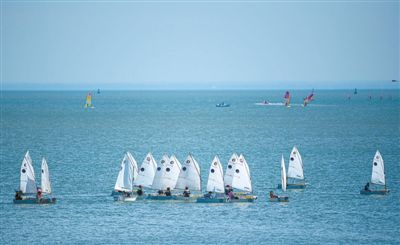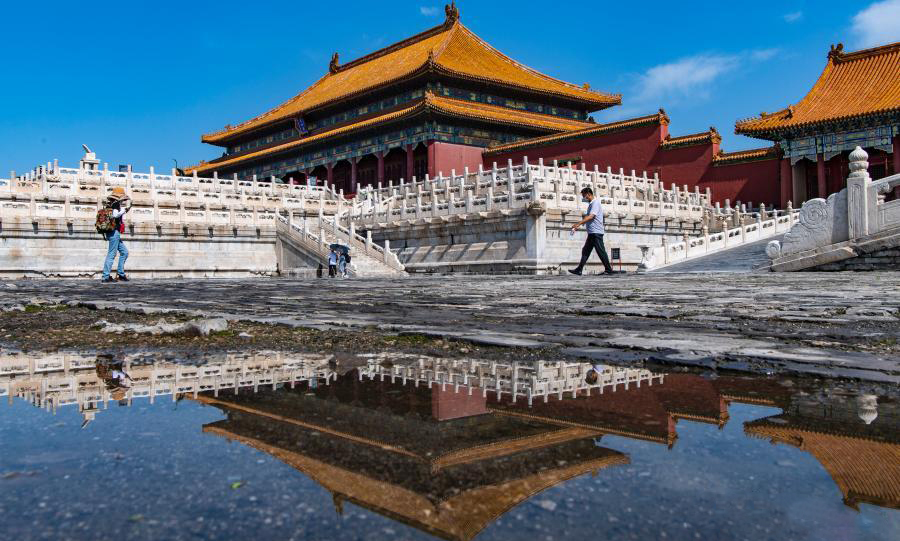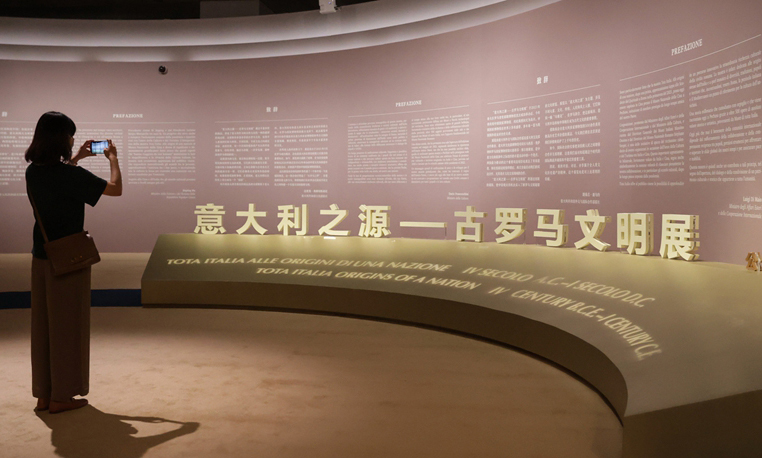Integrated development of sports and tourism boosts consumption in China

Sailing enthusiasts set sail at a training base in Haikou, south China’s Hainan Province. (Photo/Yuan Chen)
The integrated development of sports and tourism has boosted consumption related to tourism and sports activities, creating a new growth point for China’s tourism industry.
Pengzhou is a city in southwest China’s Sichuan Province. By making use of the mountain and river resources run by an ecological scenic area in the locality, Baoshan village, which is located near the scenic area, has successively launched multiple sports activities for tourists to experience, including outdoor sports activities, go-karting, all-terrain vehicle entertainment, ropeways, and jungle zip-lines.
“I’m an outdoor enthusiast and this place is heaven for me,” said a tourist surnamed Li.
Sports tourism has been included in the country’s development plan for the tourism sector during the 14th Five-Year Plan period, according to which high-quality sports tourism demonstration projects will be carried out, and the Beijing 2022 Winter Olympics and Paralympics will be taken as an opportunity for the industry to build a batch of influential sports travel routes, sports competitions and demonstration zones.
In recent years, sports tourism has gained steam in China, as skiing and skating, outdoor activities, mountaineering and cross-country sports are becoming popular sports activities among people whose incomes have increased and whose consumption behavior has increasingly been upgraded. In addition, an increasing number of tourist destinations have incorporated sports activities into their tourism products and services portfolios.
In Haikou, south China’s Hainan Province, sports and tourism are highly integrated with offering colorful travel experiences for visitors. In recent years, Hainan Province has constantly developed sports products to drive the development of its tourism sector. For instance, by organizing sailing and sailboard competitions, Haikou is able to attract over 20,000 tourists to experience the sports activities each year.
The integration between sports and tourism has played a significant role in driving all sectors related to the tourism industry, including catering, accommodation, transportation, sightseeing, shopping and entertainment.
Chen Honghao, director of the management committee of the ecological scenic area in Pengzhou city, Sichuan, expressed that the scenic area has established a tourism and cultural industrial system that sees mountain sports and healthcare products and services as its calling card. Besides, other related sectors are also being joined together under the framework of the tourism and cultural industrial system.
At present, there are over 10,000 market entities in the tertiary sector surrounding the scenic area and over 600 new companies located in its vicinity. Meanwhile, over 50 characteristic consumption scenarios have been established there. All of these have helped the city to attract 19.2 million tourist arrivals every year and register comprehensive tourism revenues of 8 billion yuan (about $1.2 billion).
Sayram Lake, a scenic area with China’s highest 5A rating located in northwest China’s Xinjiang Uygur Autonomous Region, has made intensified efforts to develop sports tourism represented by ice and snow sports.
At a ski resort that covers an area of about 360 hectares inside the scenic area, there are plans to build a ski field based on the slope of the mountainside, with the difference in elevation between its highest and lowest points being 1,314 meters. The ski field will include different types of ski tracks and a lakeside ski track, which will span over 100 kilometers. Hotels and camping sites will also be built to cater to the needs of tourists during different seasons of the year.
A report by the Meituan Research Institute has indicated that China’s snow and ice tourism and sports tourism industries have been integrated rapidly, and people born in the 1980s and the 1990s have emerged as the major force driving consumption related to snow and ice tourism.
Photos
Related Stories
- China sees tourism recovering
- China’s high-speed railways further boost tourism
- E China's Zhujiajian scenic spot sees steady recovery of tourism
- China Life: Local official promoting Sichuan tourism goes viral on internet
- Interview: Saudi Arabia minister says China significant market for kingdom's tourism market
- China’s tourism industry forecast to rebound at least 20% for Dragon Boat Festival
- Incredible transformation of remote mountain village into tourism cradle
- Interview: Global tourism industry reviving built on pandemic lessons: Singapore minister
- "Cloud tourism" a new fad amid COVID-induced travel restrictions
- E China's Jinzhai County promotes industrial integration, agro-tourism
Copyright © 2022 People's Daily Online. All Rights Reserved.









